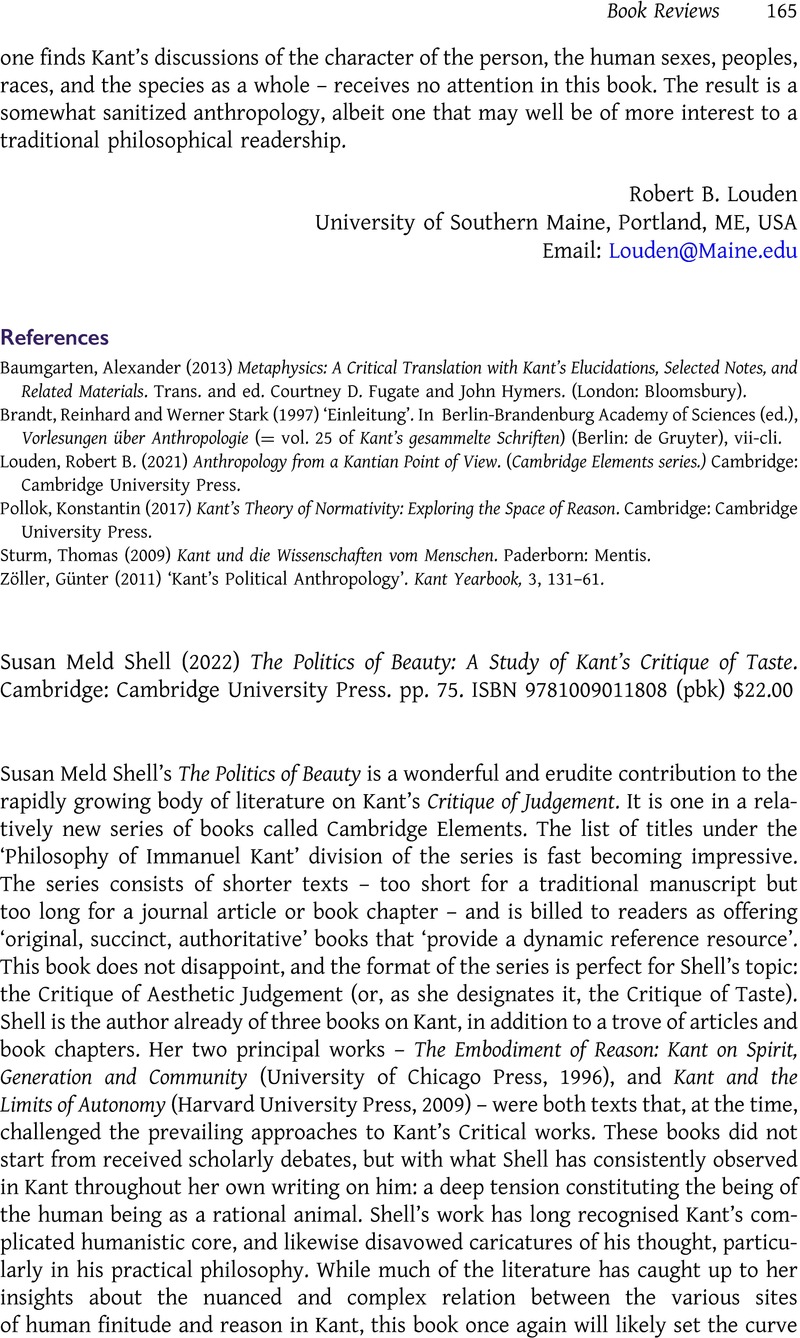No CrossRef data available.
Published online by Cambridge University Press: 08 January 2024

1 It is worth noting that while Kant maintains a historically progressive notion of culture, fine art itself does not ‘progress’. What does progress, however, is our ability to communicate.
2 While she herself does not reference it, one could develop communication as central to the human person out of Kant’s discussion of the immorality of lying in the Metaphysics of Morals, 6: 429–31.